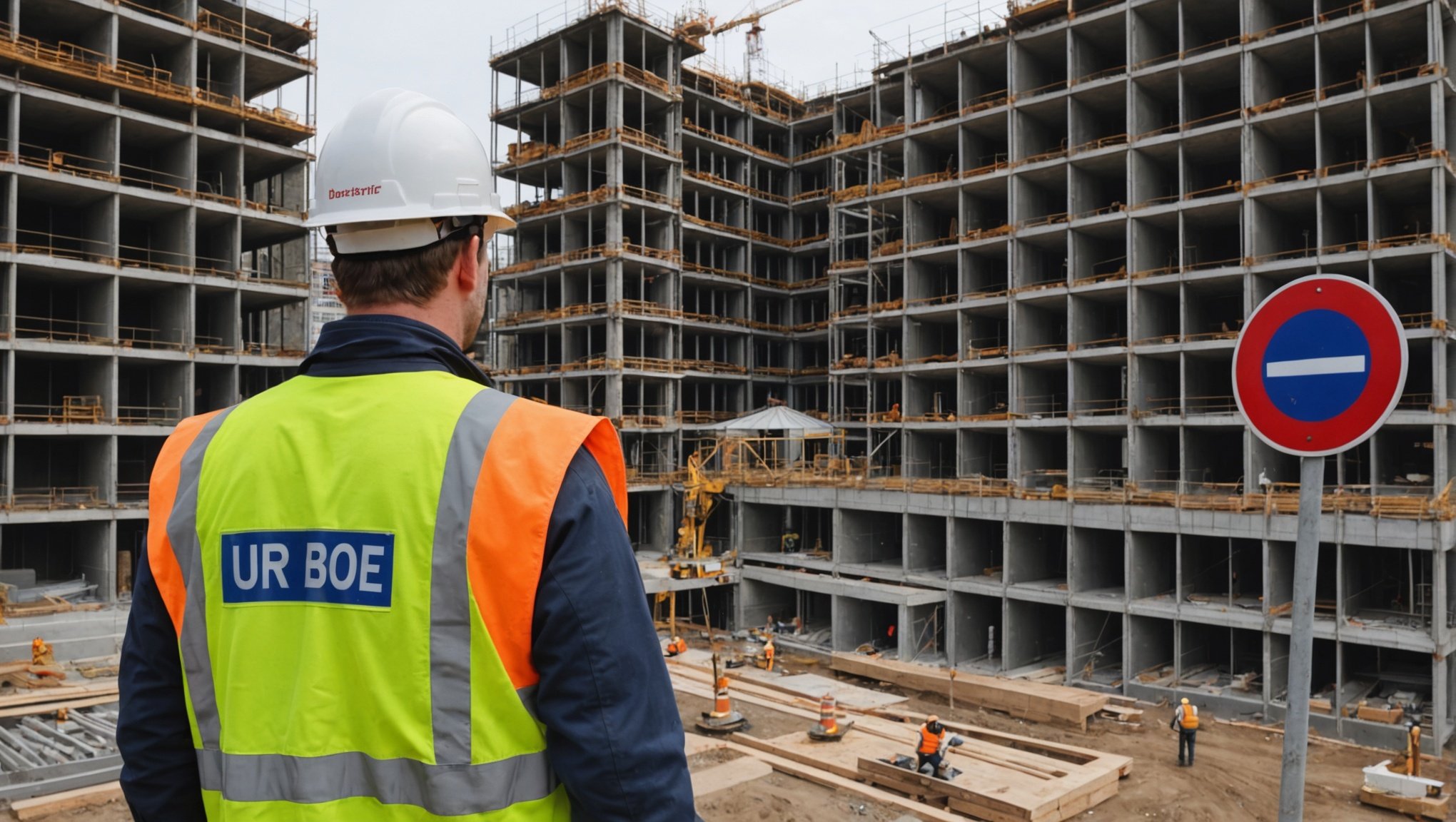The construction sector is key to the UK economy, contributing to the nation’s GDP and providing vast job opportunities. However, its potential risks to health and safety cannot be overlooked. When it comes to construction, the safety of the workforce and the public is paramount. It is therefore essential for all players within the industry to understand and adhere to the latest UK construction safety regulations.
This guide aims to provide you with vital insights on how to ensure compliance with the current safety requirements. Through a comprehensive understanding of the regulations, adoption of best practices, and proper training, your construction project can not only meet the industry standards but also foster a safe and healthy work environment.
Dans le meme genre : What Are the Challenges and Rewards of Developing Underutilized Land in UK Cities?
Understanding the Principal Construction Safety Requirements
To ensure compliance, the first step is to fully understand the current safety requirements. In the UK, the ‘Health and Safety at Work Act 1974’ serves as the principal regulator for construction safety. However, there are numerous other regulations, such as the ‘Construction (Design and Management) Regulations 2015’ that provide specific guidance for construction projects.
The regulations cover various aspects of construction, such as project design and planning, risk assessment, worker training, and emergency preparedness. They also specify the responsibilities of different parties, including the employer, the building and construction workers, the project manager, and the client. A thorough understanding of these requirements is crucial to ensure that all parties involved in the construction process adhere to the standards.
A découvrir également : How Can Investors Assess the Socio-Economic Environment Before Purchasing Urban Property?
Implementing a Comprehensive Safety Compliance System
Once you’ve understood the regulatory requirements, the next step is to implement a comprehensive safety compliance system. This system will ensure that safety regulations are adhered to at all stages of the construction process, from design and planning to completion.
The safety system should begin with a thorough risk assessment, which identifies potential hazards and proposes measures to mitigate them. It should also include regular safety inspections and audits to verify compliance with the regulations. Remember, the goal is not merely to fulfil the requirements but also to create a culture of safety within the construction site, where every individual understands their role in maintaining safety standards.
The Role of Training in Ensuring Safety Compliance
Training is a crucial tool to ensure that all the workers and stakeholders are well versed with the safety regulations. It provides them with the knowledge and skills needed to identify potential hazards, prevent accidents, and respond to emergencies effectively.
A comprehensive training program should cover a range of topics, including hazard recognition, safety equipment usage, first aid, and emergency response. It should also provide specific training on the regulations relevant to their work. For example, workers involved in fire risk activities should be trained in fire safety and prevention.
Regular Review and Updates
The construction industry, like any other, evolves over time. This evolution brings new techniques, equipment, and methods of working. These changes necessitate the regular review and updating of safety regulations.
To stay compliant, it is crucial to keep up-to-date with the latest regulations and industry best practices. This may involve attending industry conferences, participating in safety workshops, and subscribing to relevant trade publications. Moreover, the safety compliance system should be flexible enough to accommodate changes in regulations and industry practices.
Collaborating with the Regulator and Industry Bodies
Working closely with the regulatory body and industry associations can significantly help in ensuring safety compliance. These organisations provide guidance on the implementation of safety regulations, offer training resources, and facilitate the sharing of best practices among construction companies.
By collaborating with the regulator and industry bodies, you can stay informed about any changes in regulations, gain insights into the industry’s safety performance, and contribute to the continual improvement of safety standards in the construction industry.
Remember, ensuring safety compliance is not just about meeting regulatory requirements; it’s about safeguarding the well-being of your workforce and the public. It is a shared responsibility that requires the commitment of all parties involved in a construction project. By understanding the requirements, implementing a comprehensive safety system, providing training, staying updated, and collaborating with industry bodies, you can ensure a safe and compliant construction project.
Building Control and Compliance in Residential Buildings
In the realm of residential buildings, safety compliance takes on a whole new dimension. Given that these structures serve as homes for individuals and families, it is critical to uphold the highest safety standards. These buildings often have unique safety challenges that require specific building regulations to address them.
Residential buildings, especially high-rise ones, are designated as higher-risk buildings due to their height and the number of residents they house. As such, the UK safety regulations have specific guidelines for these structures. A comprehensive understanding and strict compliance with these regulations can significantly reduce the risks and ensure a safe living environment.
One of the key safety measures for residential buildings is fire safety. According to building regulations, residential buildings, especially high-rises, need to have fire safety equipment such as alarms, extinguishers, and escape routes. Further, these buildings should have fire-resistant materials in their construction to slow the spread of a fire should it occur.
Compliance with these regulations is not an option but a legal obligation. The consequences of non-compliance can result in hefty fines, legal prosecution, and most importantly, endanger the lives of residents. Therefore, it is essential to work closely with building control authorities to ensure compliance. Regular inspections by building control can help identify any issues and suggest necessary remedial actions.
The critical nature of safety in residential buildings cannot be overstated. Therefore, the construction industry must strive to comply with building and fire safety regulations to guarantee the safety and well-being of residents.
Conclusion: Promoting Safety Compliance in the Construction Industry
Promoting safety compliance in the UK’s construction industry is a multifaceted responsibility that requires the commitment of everyone involved in the construction process. As we have discussed, understanding the regulatory landscape, implementing comprehensive safety measures, continuous training, staying abreast with industry developments and actively collaborating with safety regulators and industry bodies are all necessary steps to ensure a safe and compliant construction project.
The benefits of safety compliance go beyond legal obligation and avoiding penalties. It contributes significantly to creating a safe working environment, enhancing productivity, reducing accidents, and improving the overall reputation of the construction industry. It’s also about protecting lives – of construction workers, building occupants, and the general public.
Indeed, safety compliance is a journey that requires constant vigilance, consistency, and commitment to excellence. We all have a role to play in it – from construction workers to project managers, clients to safety regulators. By working together, keeping abreast of the latest safety regulations, and employing best practices, we can make the UK construction industry safer, healthier, and more productive.
After all, at the heart of every construction project are people – and their health, safety, and lives are worth every effort to ensure compliance with safety regulations. Let’s all remain committed to building a safer future!






